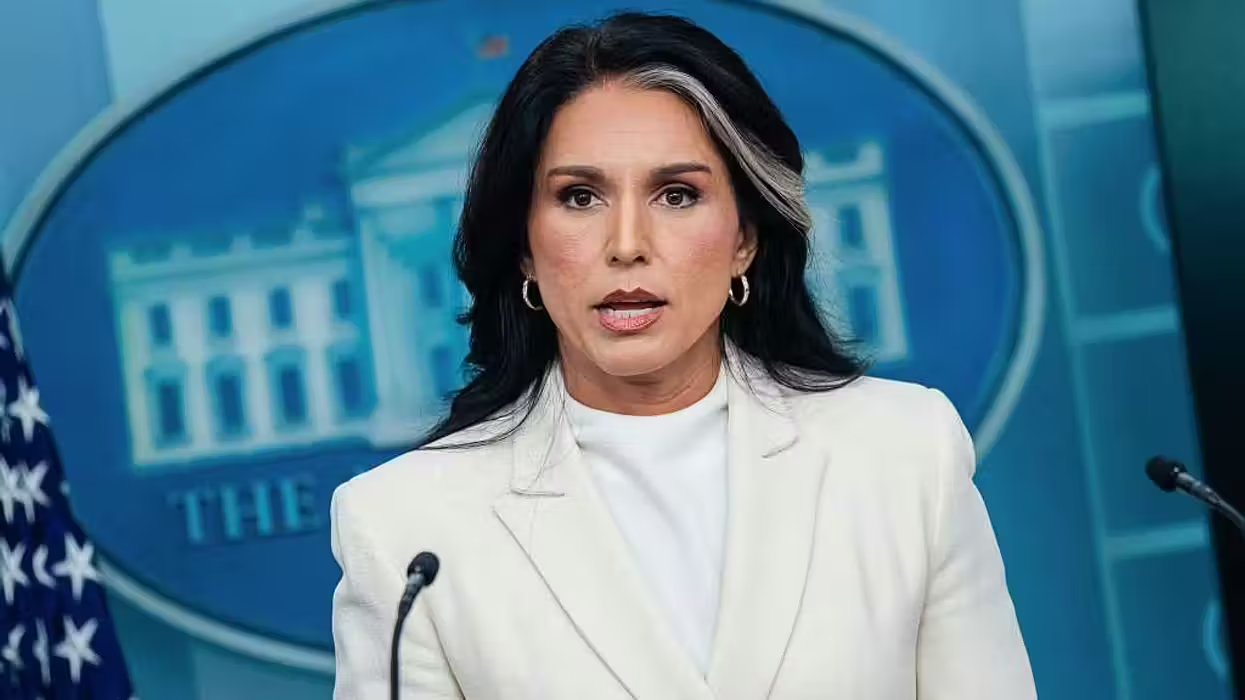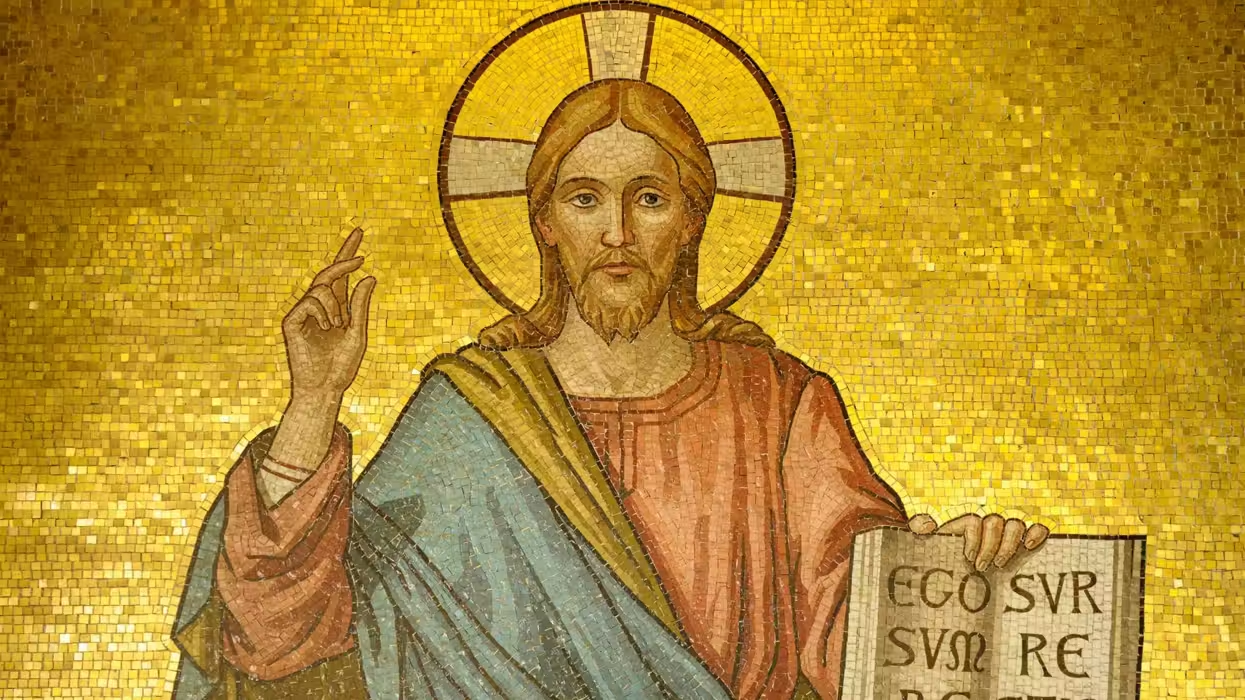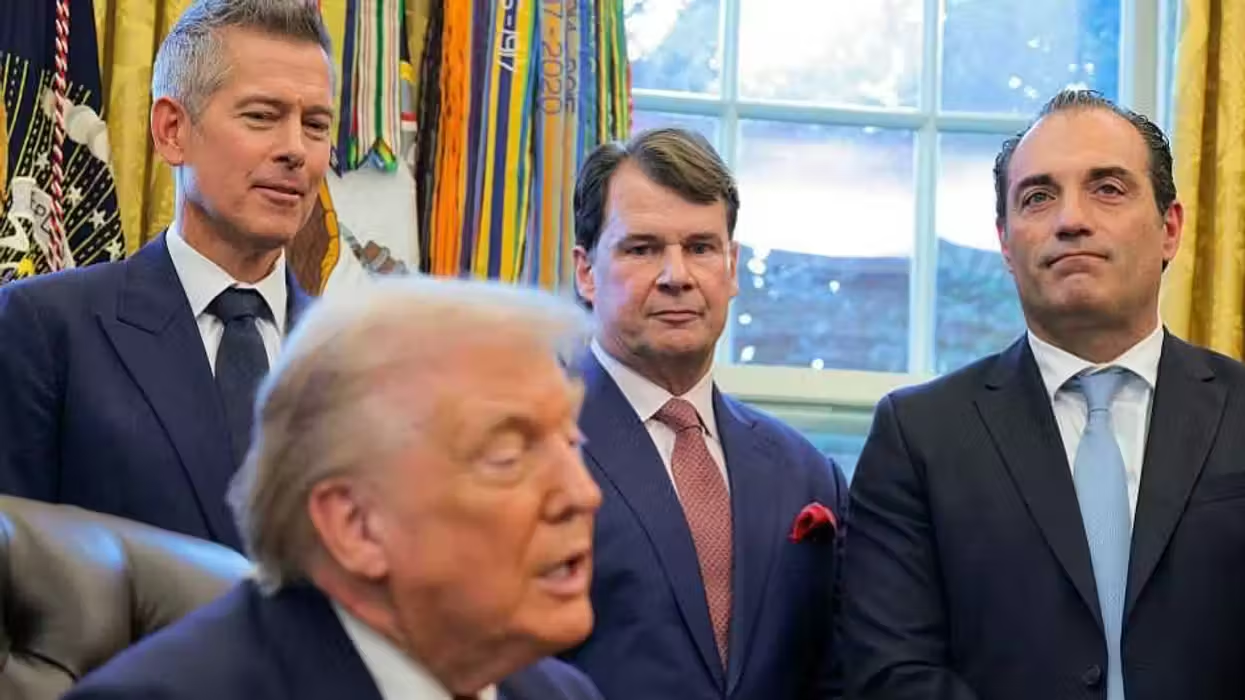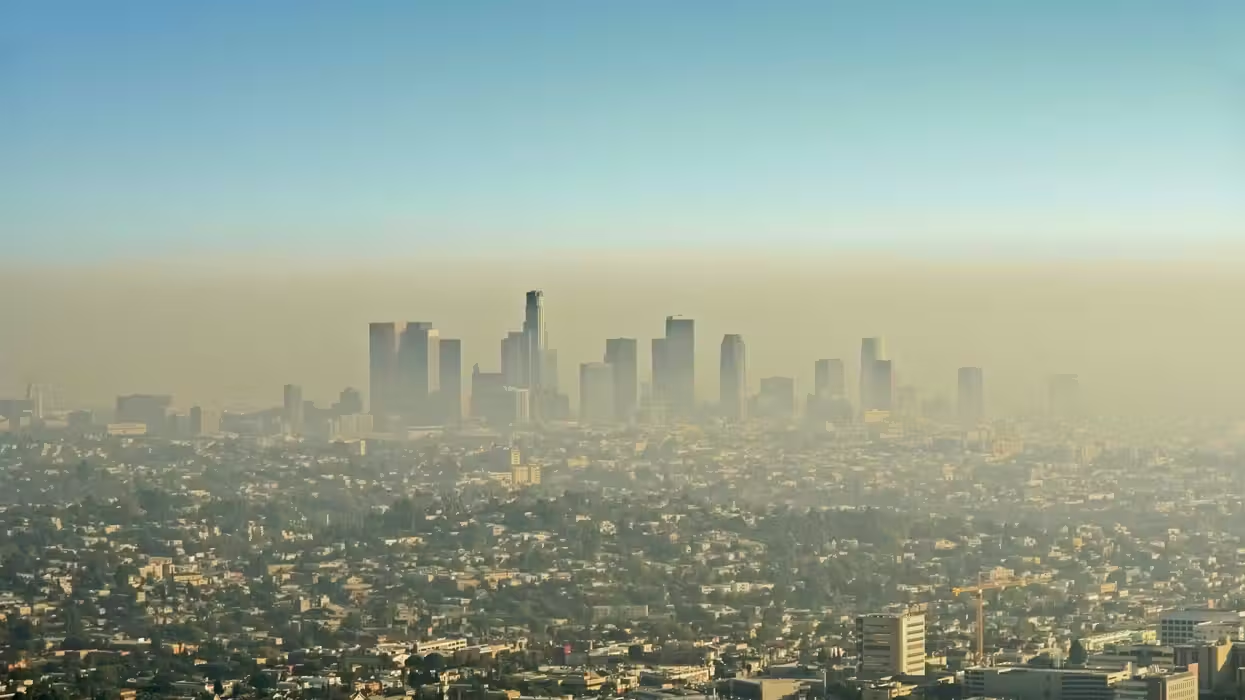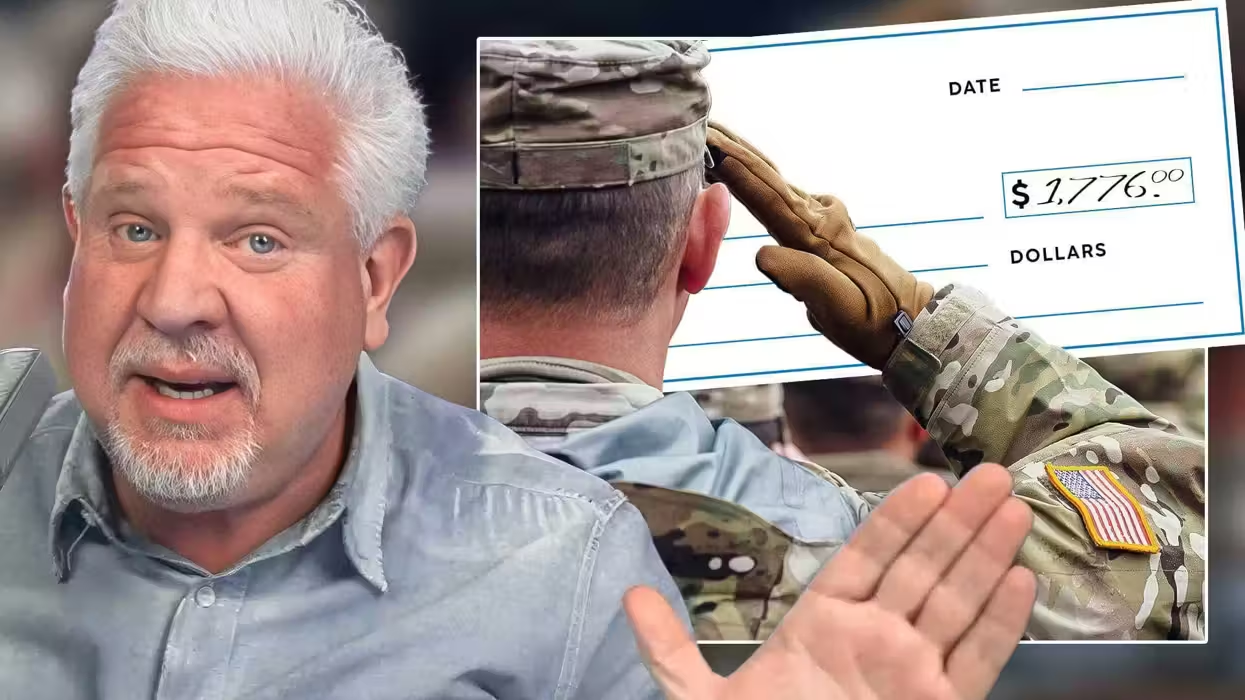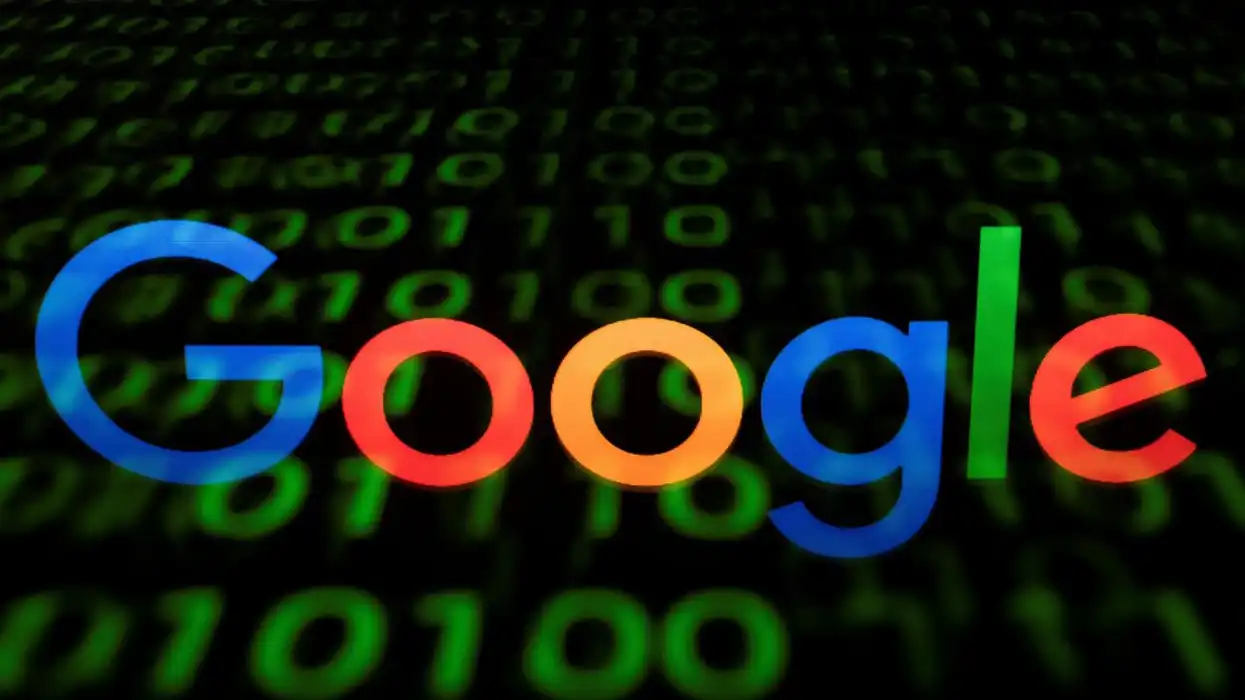At first, it seemed like protestors might disperse peacefully and go home before the midnight curfew, imposed by Missouri Gov. Jay Nixon, came into effect in the St. Louis suburb of Ferguson Saturday night.
They didn't.
 Law enforcement officers wait to advance Sunday, Aug. 17, 2014, after firing tear gas to disperse a crowd protesting the shooting of teenager Michael Brown last Saturday in Ferguson, Mo. Brown's shooting in the middle of a street following a suspected robbery of a box of cigars from a nearby market has sparked a week of protests, riots and looting in the St. Louis suburb. (AP Photo/Charlie Riedel)
Law enforcement officers wait to advance Sunday, Aug. 17, 2014, after firing tear gas to disperse a crowd protesting the shooting of teenager Michael Brown last Saturday in Ferguson, Mo. Brown's shooting in the middle of a street following a suspected robbery of a box of cigars from a nearby market has sparked a week of protests, riots and looting in the St. Louis suburb. (AP Photo/Charlie Riedel)
"The curfew is going to make things worse," protester Phones Scott, 24, told Reuters Saturday evening. "I think the cops are going to get violent tonight, but they can't lock us all up."
Police arrested seven people and deployed tear gas to disperse crowds, but it seemed to be the protestors who got violent: The Associated Press reported that one person was shot in a restaurant under unclear circumstances (but police said they were not involved in the shooting), and in another case someone fired on a police car, though no cops were reported injured.
From the AP:
Missouri State Highway Patrol Capt. Ron Johnson said during a news conference that police are still seeking the person who shot the critically wounded victim and defended his department's strong strategic response that came after a midnight to 5 a.m. curfew took hold in Ferguson, Missouri. Johnson said the strong police response was precipitated by two events.
Johnson said concerns about people who'd broken into a barbecue restaurant and taken position on the roof overlooking approaching police was one strategic concern. He said another involved a man who flashed a handgun and appeared in the middle of the street as armored vehicles approached the crowd of protesters.
Johnson said someone also fired at a patrol car, but no officers were injured.
 People defy a curfew Sunday, Aug. 17, 2014, before smoke and tear gas was fired to disperse a crowd protesting the shooting of teenager Michael Brown last Saturday in Ferguson, Mo. Brown's shooting in the middle of a street following a suspected robbery of a box of cigars from a nearby market has sparked a week of protests, riots and looting in the St. Louis suburb. (AP Photo/Charlie Riedel)
People defy a curfew Sunday, Aug. 17, 2014, before smoke and tear gas was fired to disperse a crowd protesting the shooting of teenager Michael Brown last Saturday in Ferguson, Mo. Brown's shooting in the middle of a street following a suspected robbery of a box of cigars from a nearby market has sparked a week of protests, riots and looting in the St. Louis suburb. (AP Photo/Charlie Riedel)
The first night of Gov. Nixon's curfew, which lasted from midnight until 5 a.m. Sunday, was triggered by the ongoing protests in Ferguson over the police shooting of an unarmed young black man, Michael Brown.
Gov. Nixon declared a state of emergency Saturday and announced the curfew following a violent Friday night in Ferguson marked by looting and attempted arson.
When police deployed tear gas to break up the crowd early Sunday, it wasn't the first time they'd done it in the small town of about 21,000 people over the past week.
Earlier on Saturday evening, the AP reported that some protestors were encouraging others to obey the curfew.
Malik Shabazz, president of the Black Lawyers for Justice and former national chairman of the New Black Panther Party, roamed the streets with other New Black Panthers using bullhorns to tell protestors to head home before midnight.
Shabazz also argued against the curfew, and tried to convince authorities to delay the curfew by an hour, the AP noted.
 Col. Ron Replogle, left, and Capt. Ron Johnson talk with Malik Shabazz, president of the Black Lawyers for Justice, (center) during a march with protesters along W. Florissant Avenue in Ferguson Missouri on Saturday, Aug. 16, 2014. (AP Photo/St. Louis Post-Dispatch, David Carson)
Col. Ron Replogle, left, and Capt. Ron Johnson talk with Malik Shabazz, president of the Black Lawyers for Justice, (center) during a march with protesters along W. Florissant Avenue in Ferguson Missouri on Saturday, Aug. 16, 2014. (AP Photo/St. Louis Post-Dispatch, David Carson)
While some protestors heeded the Black Panthers' calls, others stayed in the streets until the police cracked down.
 Police officers man their positions in front of Ferguson businesses just after 10 p.m. on West Florissant Avenue on Saturday, Aug. 16, 2014. A curfew was to go into effect at midnight. (AP Photo/St. Louis Post-Dispatch, Robert Cohen)
Police officers man their positions in front of Ferguson businesses just after 10 p.m. on West Florissant Avenue on Saturday, Aug. 16, 2014. A curfew was to go into effect at midnight. (AP Photo/St. Louis Post-Dispatch, Robert Cohen)
The violence and unrest over the past week has sparked a national debate about race and the militarization of local police forces.
The FBI is investigating the Aug. 9 shooting of 18-year-old Brown by a Ferguson police officer, 28-year-old Darrell Wilson.
Brown was black, and Wilson is white.
Brown was allegedly involved in a strong-arm robbery shortly before he was shot, but police say Wilson was unaware of the robbery at the time of the shooting.
Stories from police and eyewitnesses diverge, with cops saying Brown physically struggled with Wilson before the shooting and witnesses claiming Wilson instigated the altercation.
—
Follow Zach Noble (@thezachnoble) on Twitter

 Law enforcement officers wait to advance Sunday, Aug. 17, 2014, after firing tear gas to disperse a crowd protesting the shooting of teenager Michael Brown last Saturday in Ferguson, Mo. Brown's shooting in the middle of a street following a suspected robbery of a box of cigars from a nearby market has sparked a week of protests, riots and looting in the St. Louis suburb. (AP Photo/Charlie Riedel)
Law enforcement officers wait to advance Sunday, Aug. 17, 2014, after firing tear gas to disperse a crowd protesting the shooting of teenager Michael Brown last Saturday in Ferguson, Mo. Brown's shooting in the middle of a street following a suspected robbery of a box of cigars from a nearby market has sparked a week of protests, riots and looting in the St. Louis suburb. (AP Photo/Charlie Riedel)

